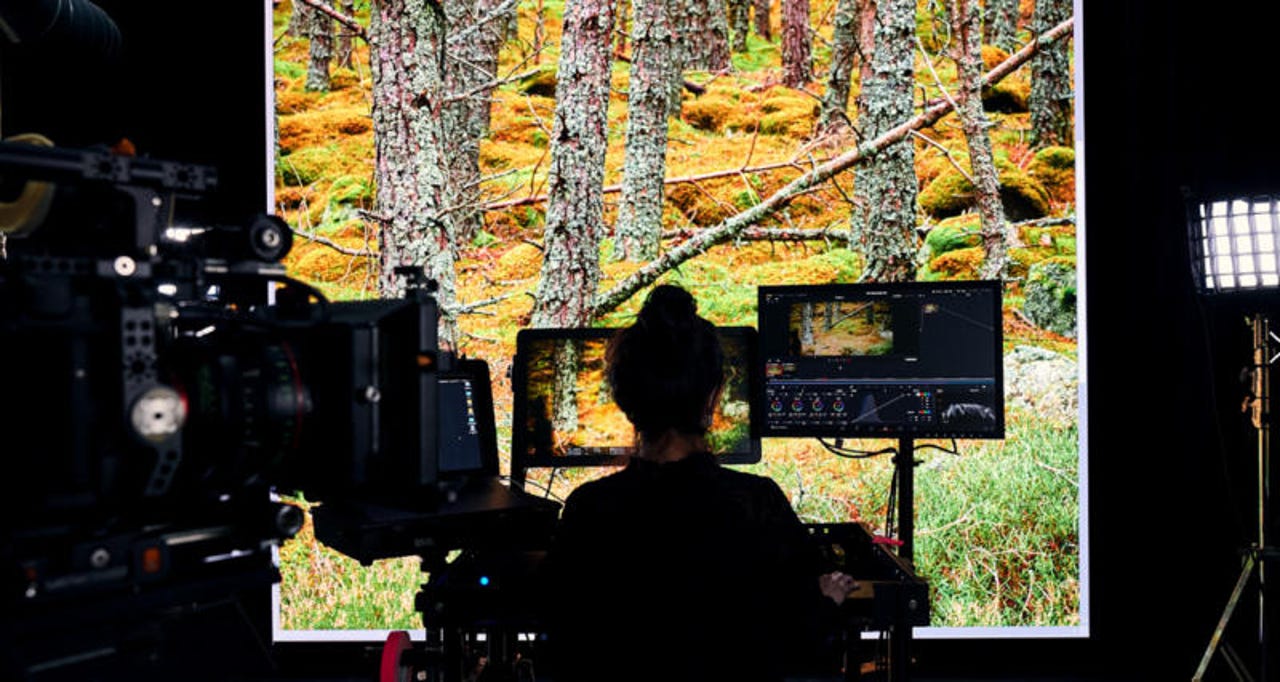Nvidia enters 'science-fiction metaverse' with Omniverse Enterprise for 3D collaboration


WPP takes the power of Omniverse and uses it for advertising
Nvidia unveiled at GTC 2021 a new platform for 3D designers to collaborate and work on, Omniverse Enterprise.
The subscription software has been labelled as a "killer app" by the company, is built on the Universal Scene Description (USD) framework from Pixar, and offers designers the ability to "work simultaneously in a virtual world from anywhere, on any device".
"There's millions of freelancers in the world that use 3D packages, but they use multiple 3D packages, whether it's multiple 3D modelling packages, or 3D modelling and 3D painting, and things like that -- and so quite often they're having to export and import across those applications even though they're working by themselves," Nvidia general manager of media and entertainment Richard Kerris said.
"Now omniverse helps change that paradigm by putting those applications live on the platform so they can just go between them and that's a huge game-changer for them."
The ability to work across multiple formats is thanks to its connectors with applications from Adobe, Autodesk, Epic Games, Blender, Bentley Systems, and ESRI.
"You can think of USD as the HTML of 3D, think of Omniverse as the browser for that HTML of 3D," Kerris added.
Nvidia will still have a version of Omniverse that individuals can download and use for free, but the company is banking on the collaboration aspect bringing customers that want a supported verison.
"Real-time interoperability between the applications, it really alleviates the IT challenges by making scalable deployment across organisations of any scale, in any size, and it allows for physically accurate simulation, or true to reality simulation -- so you can be all around the world visualising a building, and looking at sun studies and weather and things like that," Kerris said.
The subscription will include the Nucleus management server and its connectors, Omniverse Create to compose scenes, Omniverse View for rendering, a toolkit to create apps to extend the platform, and an RTX virtual workstation. Omniverse Enterprise will be available in the Northern Hemisphere summer.
Nvidia said Omniverse Enterprise is optimised for its RTX devices and EGX platform.
Since launching the beta, Nvidia said it had seen almost 17,000 beta users in three months, and had been working with 400 companies over the past two years on Omniverse.
Among those testing has been BMW which has been using it to create a digital twins of factories.
"Nvidia Omniverse and Nvidia AI give us the chance to simulate all 31 factories in our production network. All elements of the complete factory model -- including the associates, the robots, the buildings and the assembly parts -- can be simulated to support a wide range of AI-enabled use cases such as virtual factory planning, autonomous robots, predictive maintenance and big data analytics," said BMW management board member Milan Nedeljkovic said.
"These new innovations will reduce the planning times, improve flexibility and precision and at the end produce 30% more efficient planning processes."
Activision has been using Omniverse to search untagged 3D assets, while Ericsson has been using it to model 5G networks.
"Every few decades, technologies converge to enable a whole new thing -- Omniverse is such an invention," said Nvidia founder and CEO Jensen Huang.
"Building on Nvidia's entire body of work, Omniverse lets us create and simulate shared virtual 3D worlds that obey the laws of physics. The immediate applications of Omniverse are incredible, from connecting design teams for remote collaboration to simulating digital twins of factories and robots.
"The science-fiction metaverse is near."